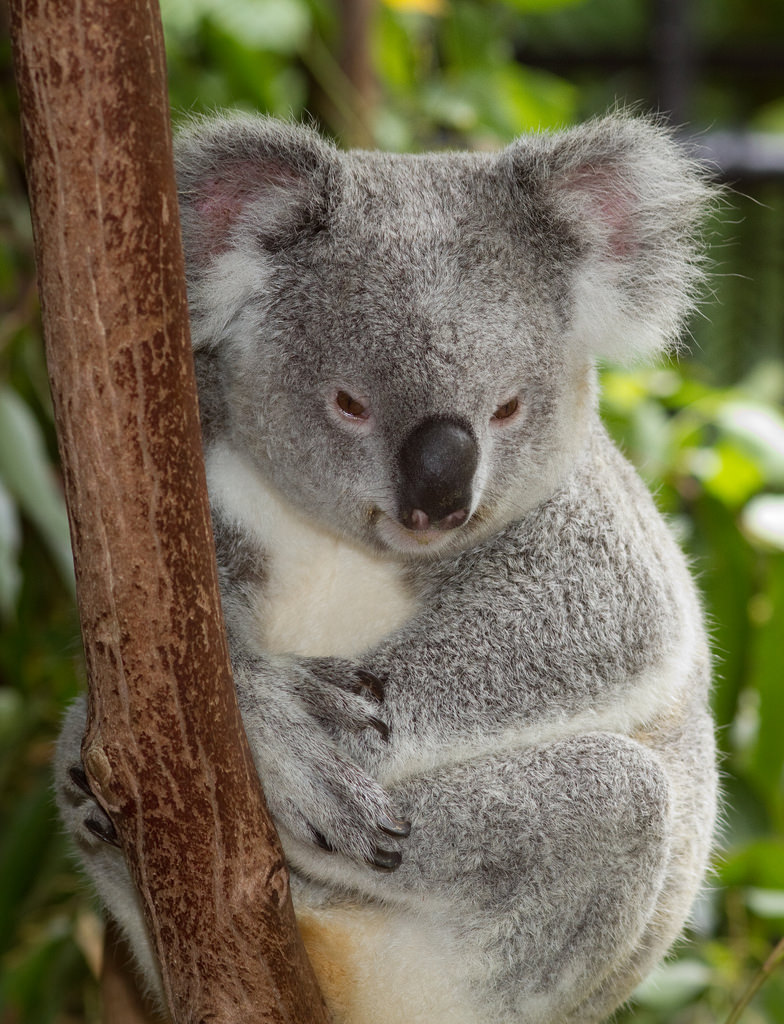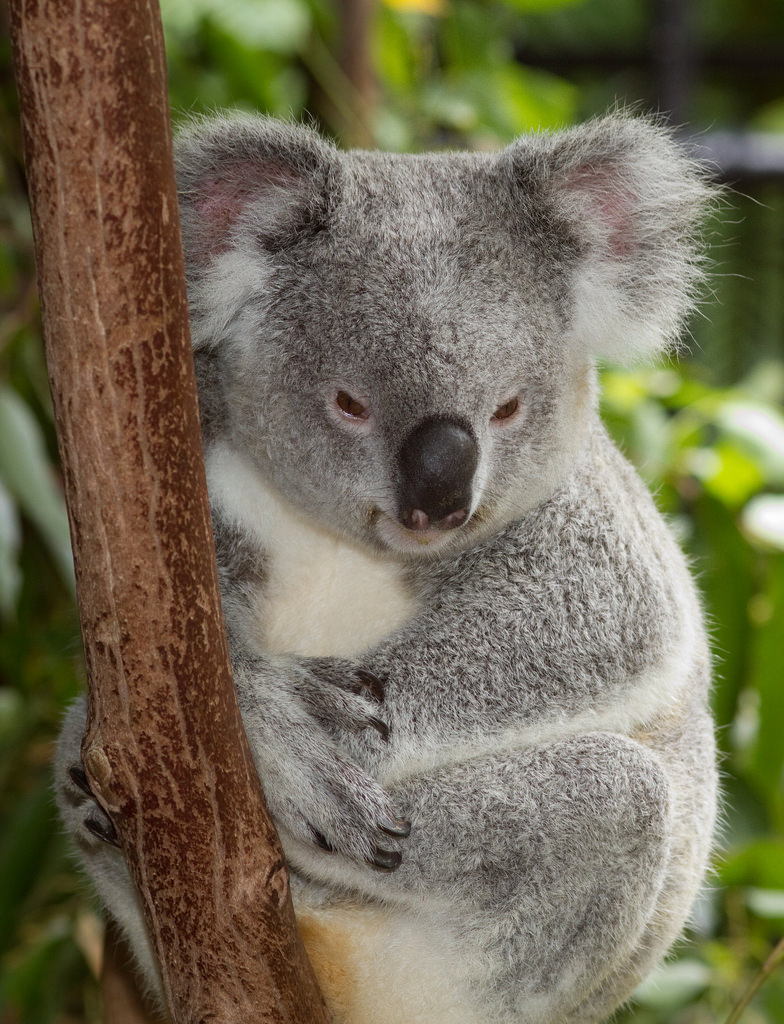12.21: Marsupials
- Page ID
- 13257

Is it really a bear?
The koala. Or sometimes called the koala bear. The koala is a marsupial native to Australia. And it is very different to any other bear.
Marsupials
Marsupials have a different way of reproducing that reduces the mother’s risks. A marsupial is a therian mammal in which the embryo is born at an early, immature stage. The embryo completes its development outside the mother’s body in a pouch on her belly. Only a minority of therian mammals are marsupials. They live mainly in Australia. Examples of marsupials are pictured in Figure below.
 Marsupials. Marsupials include the kangaroo, koala, and opossum.
Marsupials. Marsupials include the kangaroo, koala, and opossum.The Marsupial Embryo
The marsupial embryo is nourished inside the uterus with food from a yolk sac instead of through a placenta. The yolk sac stores enough food for the short period of time the embryo remains in the uterus. After the embryo is born, it moves into the mother’s pouch, where it clings to a nipple. It remains inside the pouch for several months while it continues to grow and develop. Even after the offspring is big enough to leave the pouch, it may often return to the pouch for warmth and nourishment. Eventually, the offspring is mature enough to remain outside the pouch on its own.
Pros and Cons of Marsupial Development
In marsupials, the short period of development within the mother’s uterus reduces the risk of her immune system attacking the embryo. In addition, the marsupial mother doesn’t have to eat extra food or carry a large fetus inside her. The risks of giving birth to a large fetus are also avoided. Another pro is that the mother can expel the embryo from her pouch if she is pursued by a predator or if food is scarce. On the other hand, a newborn marsupial is tiny and fragile. Therefore, it may be less likely to survive than a newborn placental mammal.
The North American Marsupial: The Opossum
Most people think of opossums as scary creatures. Is this because they look kind of funny, walk kind of funny, have beady eyes and sharp teeth, and can emit a very foul odor? Maybe. But what is so different about opossums is that they are the only marsupial in North America.
These opossums, however, can be beneficial to humans. They use their sharp teeth to crush bone – which means that they are good getting rid of unwanted rodents in your neighborhood. They have excellent immune systems and they emit that terrible odor for protection.
Summary
- Marsupials give birth to a tiny, immature embryo. The embryo then continues to grow and develop in a pouch on the mother’s belly.
- Marsupial development is less risky for the mother. However, the embryo is fragile, so it may be less likely to survive than the fetus of a placental mammal.
Review
- What is a marsupial?
- Where does a marsupial embryo develop? How is it nourished?
- Name two advantages of marsupial development?
| Image | Reference | Attributions |
 |
[Figure 1] | License: CC BY-NC |
 |
[Figure 2] | Credit: Kangaroo: Subhash Chandra; Koala: Brian Gratwicke; Opossum: Jessie Hirsch;By Nobu Tamura http://paleoexhibit.blogspot.com/ http://spinops.blogspot.com/ http://www.palaeocritti.com - Own work, CC BY-SA 3.0, commons.wikimedia.org/w/inde...curid=19459893 Source: Kangaroo: http://www.flickr.com/photos/ysc/2179798100/ ; Koala: http://www.flickr.com/photos/briangratwicke/5337546645/ ; Opossum: www.flickr.com/photos/jhirsch/2484508614/ ; By Nobu Tamura http://spinops.blogspot.com/ http://www.palaeocritti.com - Own workhttp://paleoexhibit.blogspot.com/ ; CC BY-SA 3.0 ; commons.wikimedia.org/w/index.php?curid=19459893 License: CC BY 2.0 |

